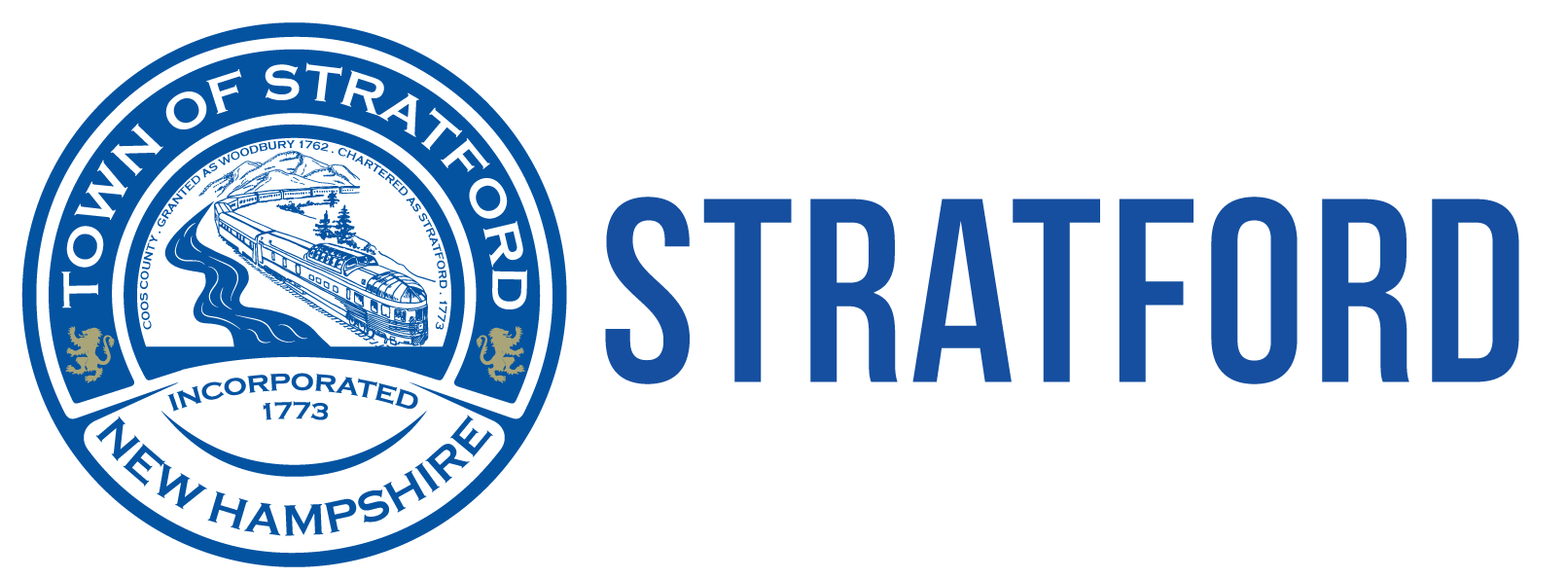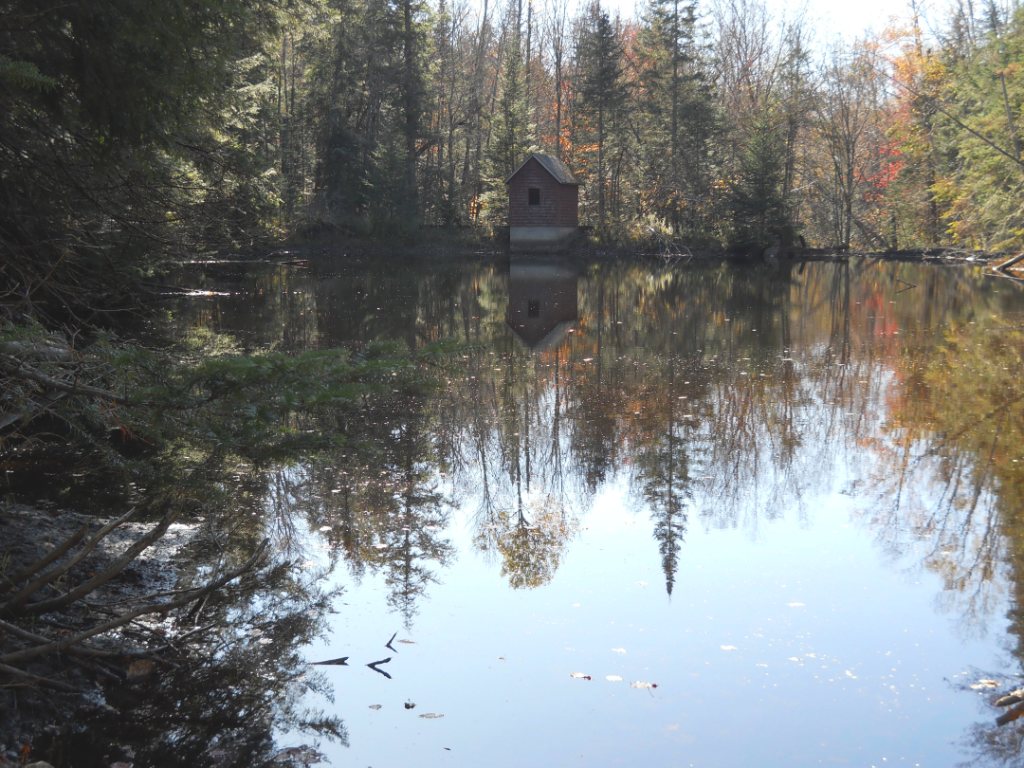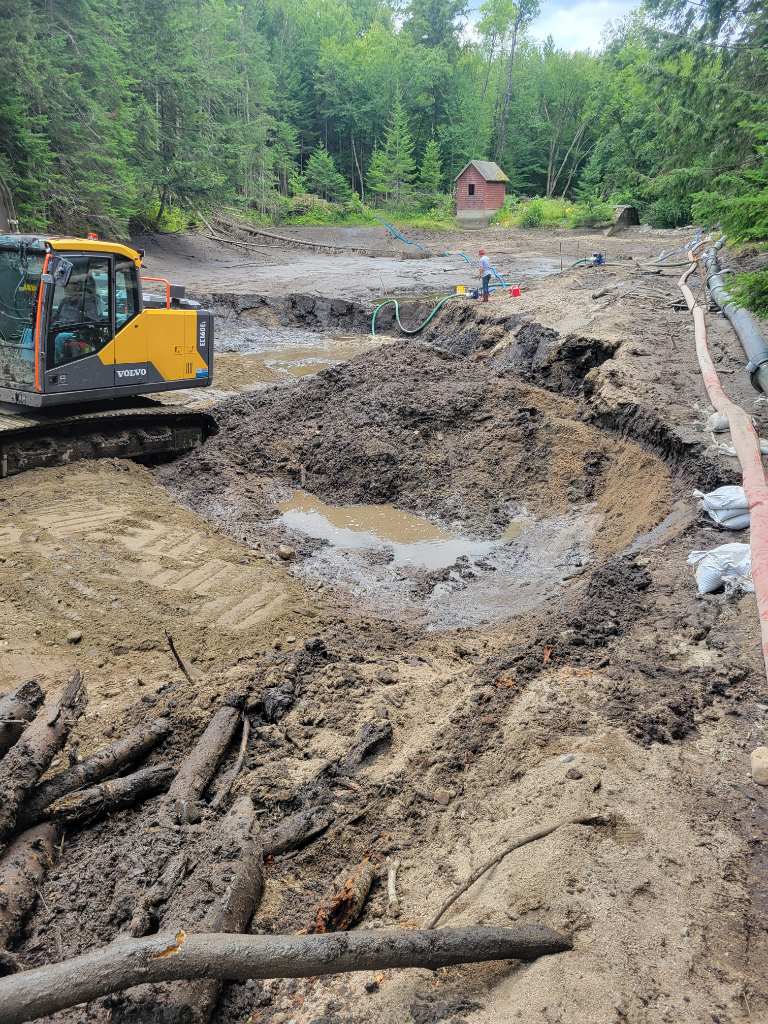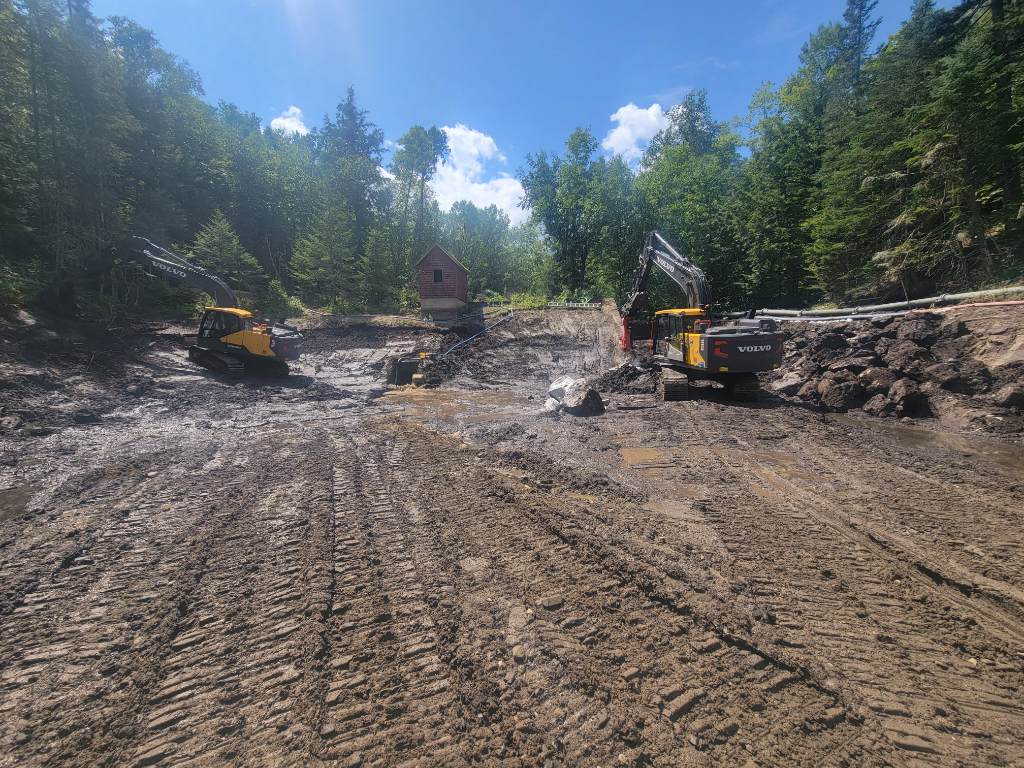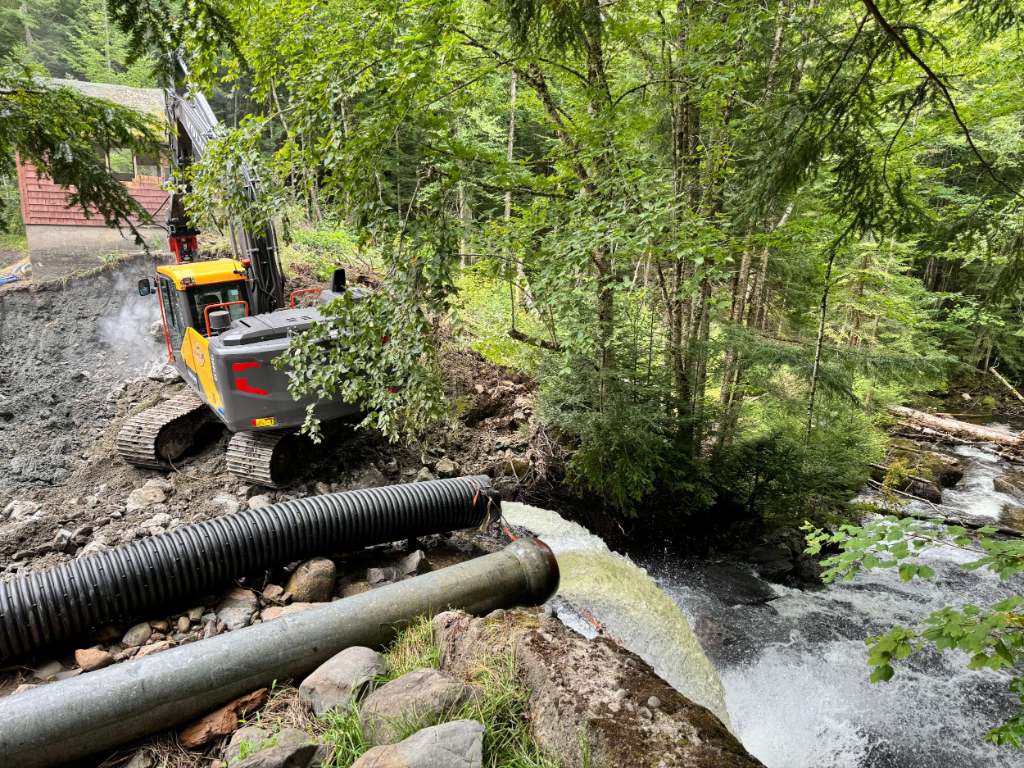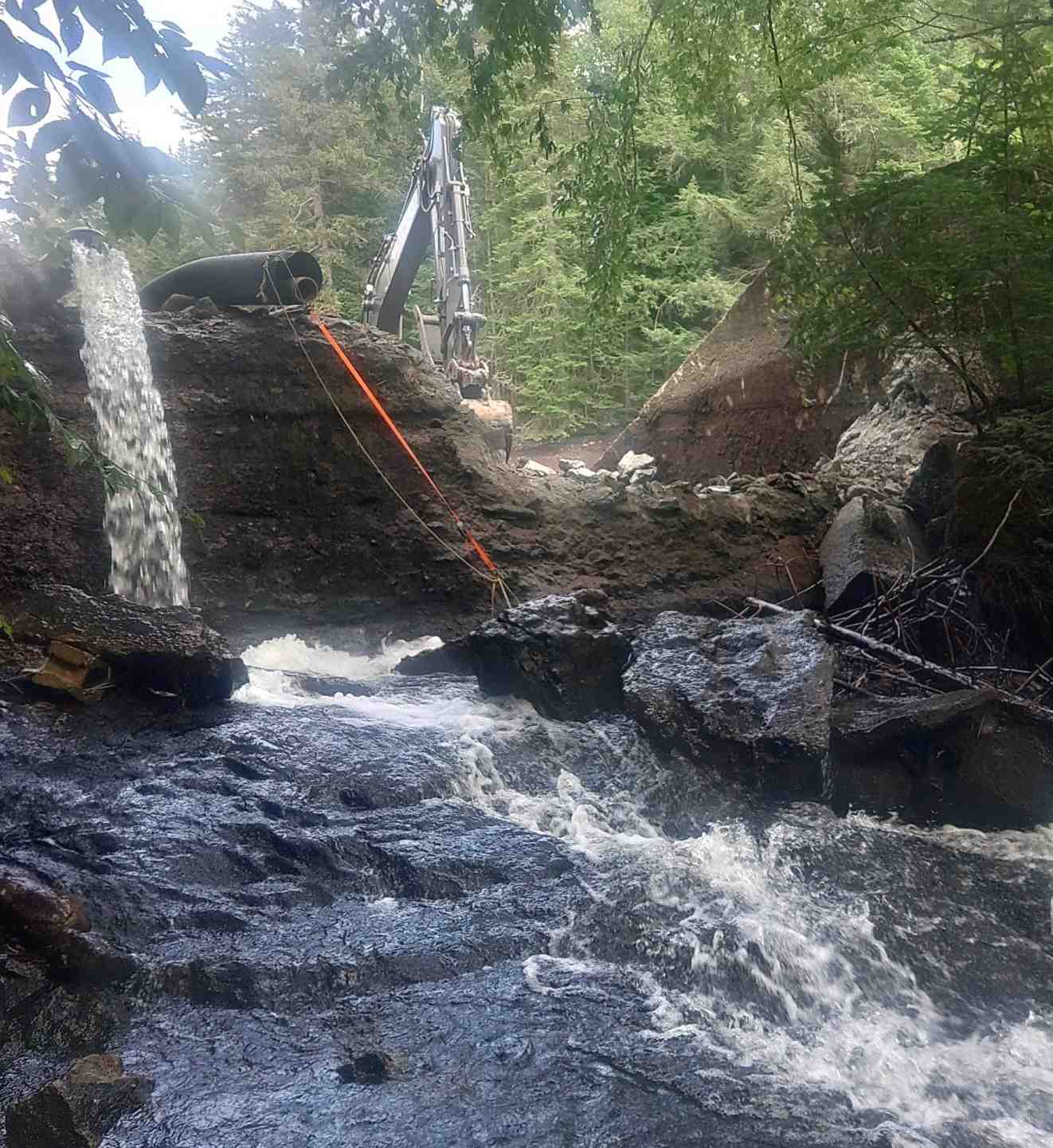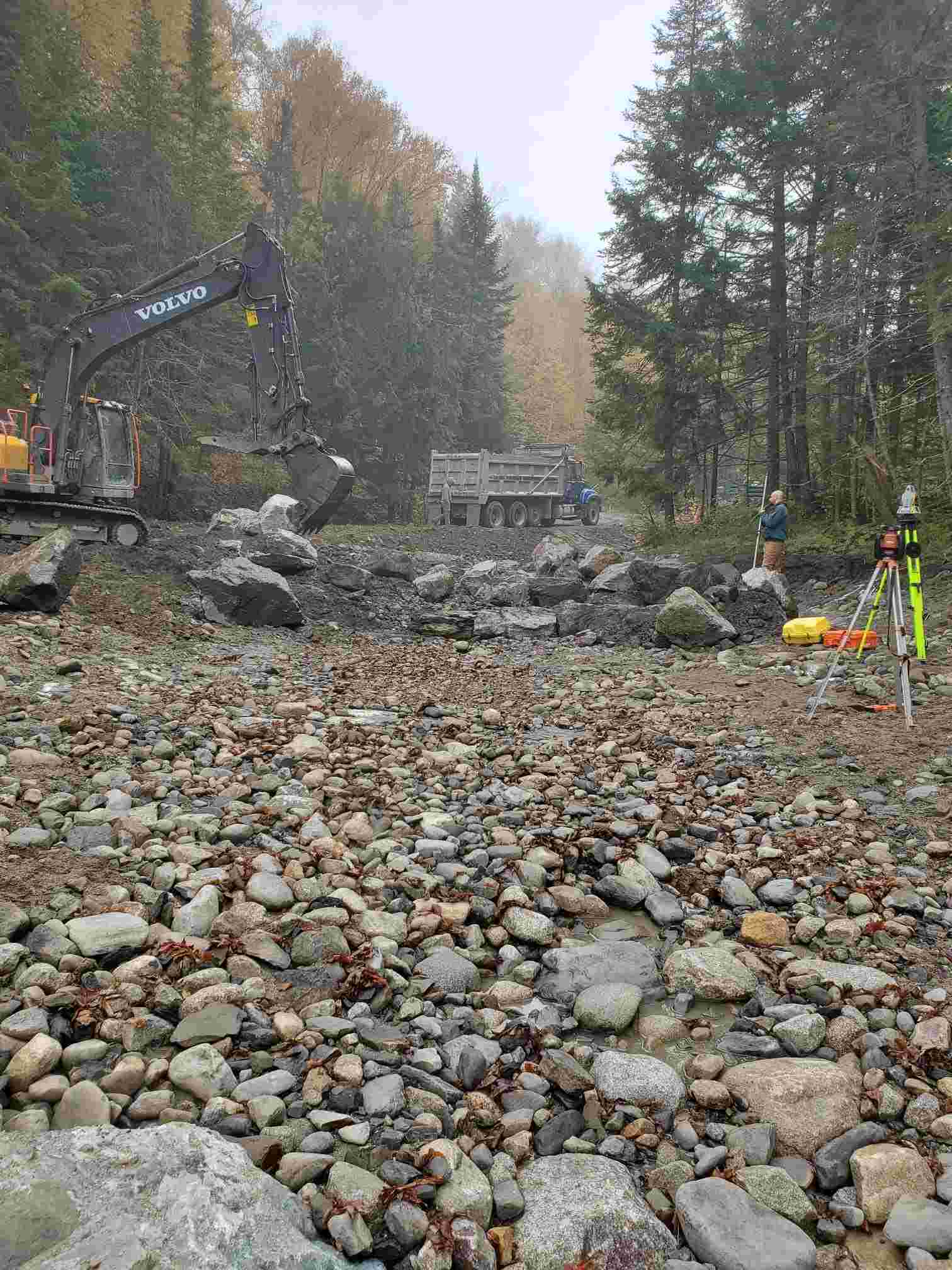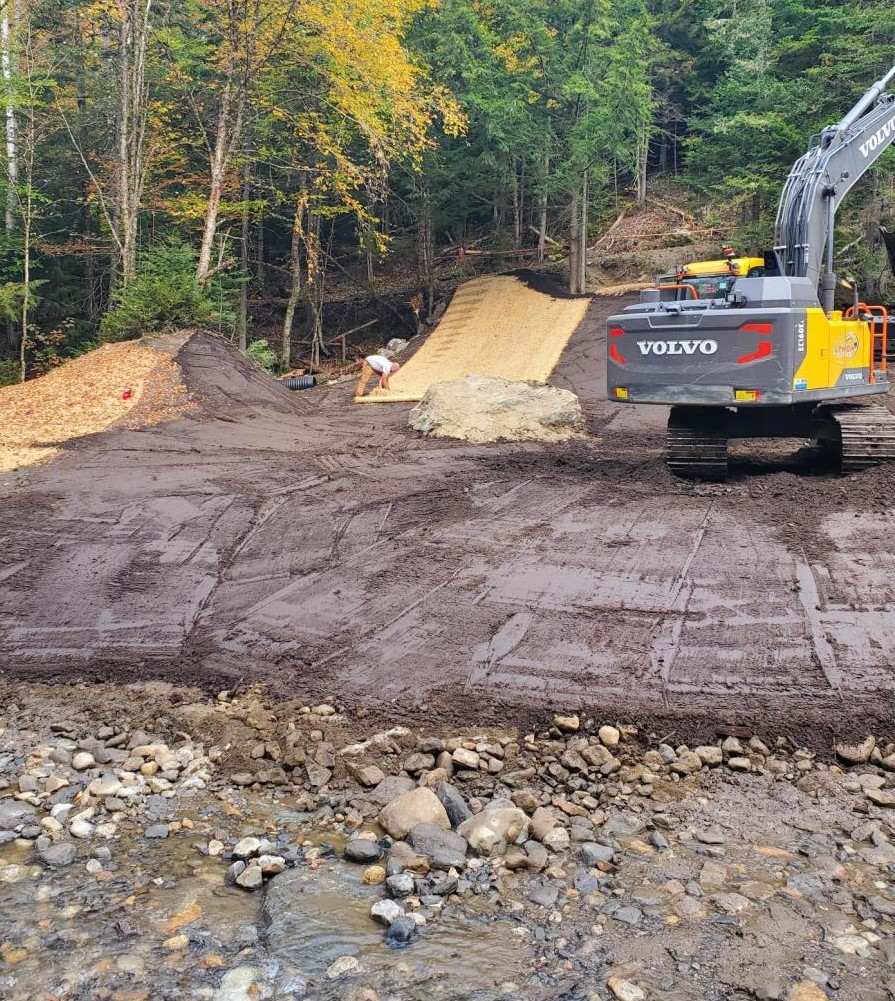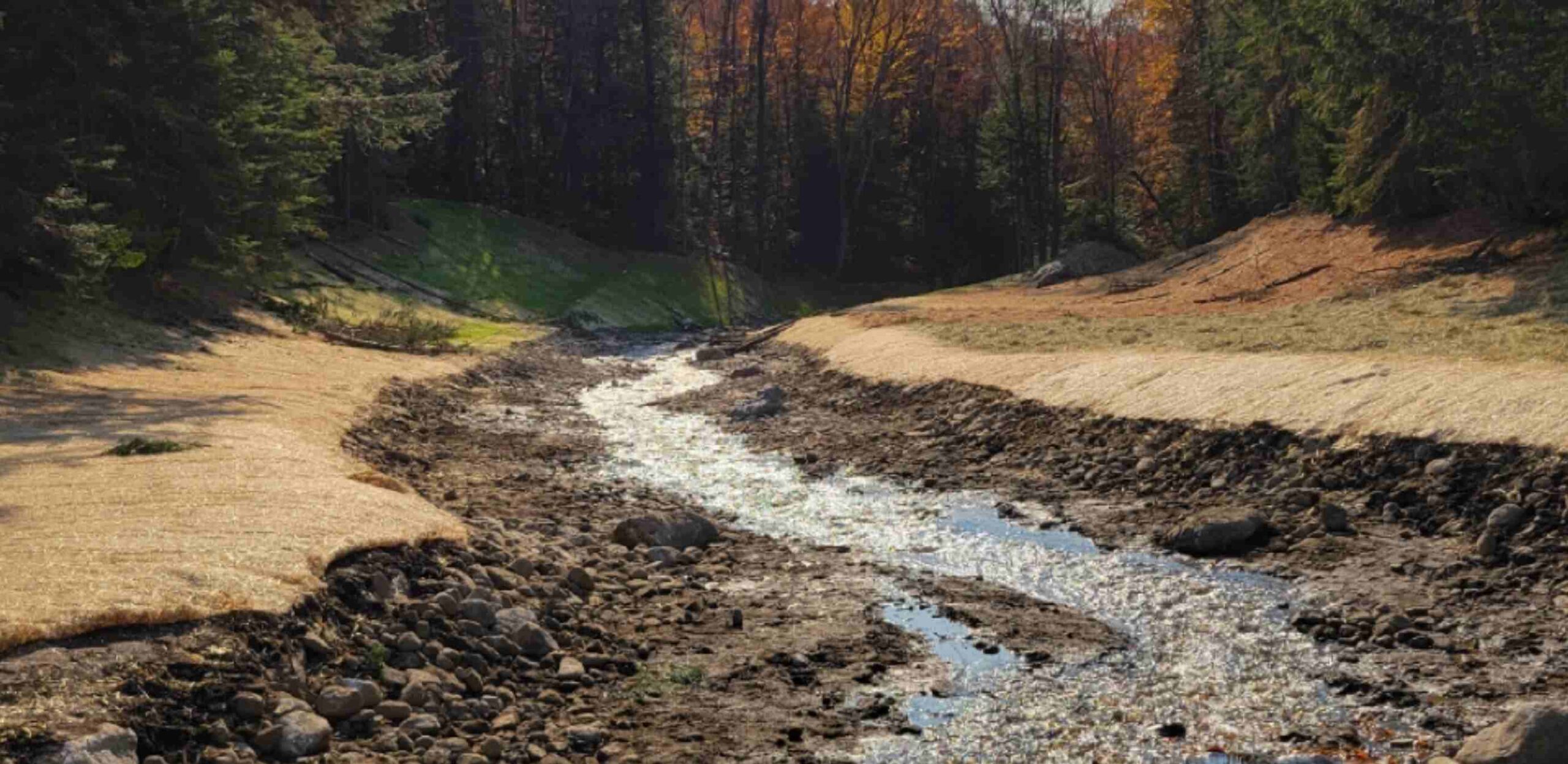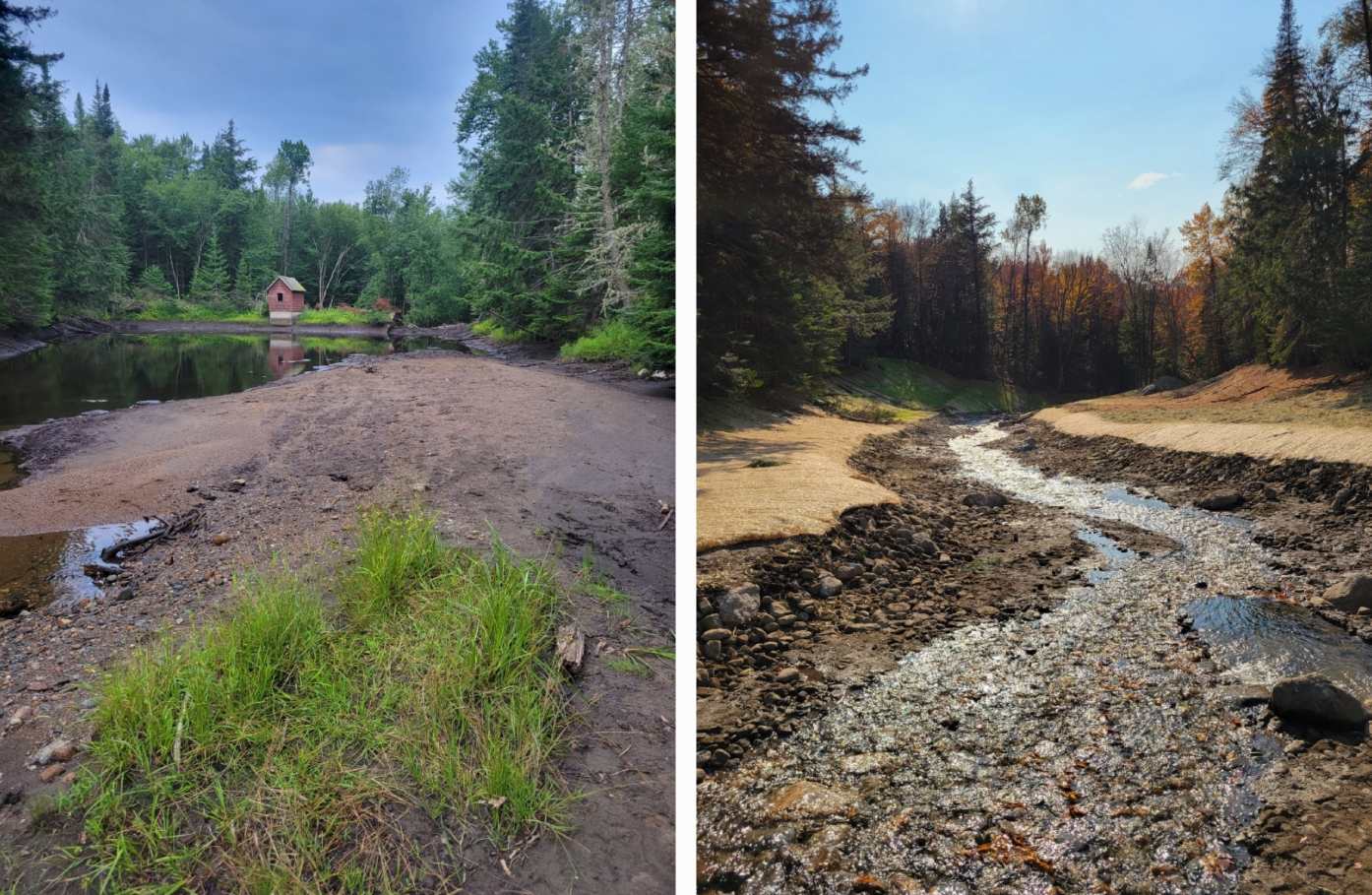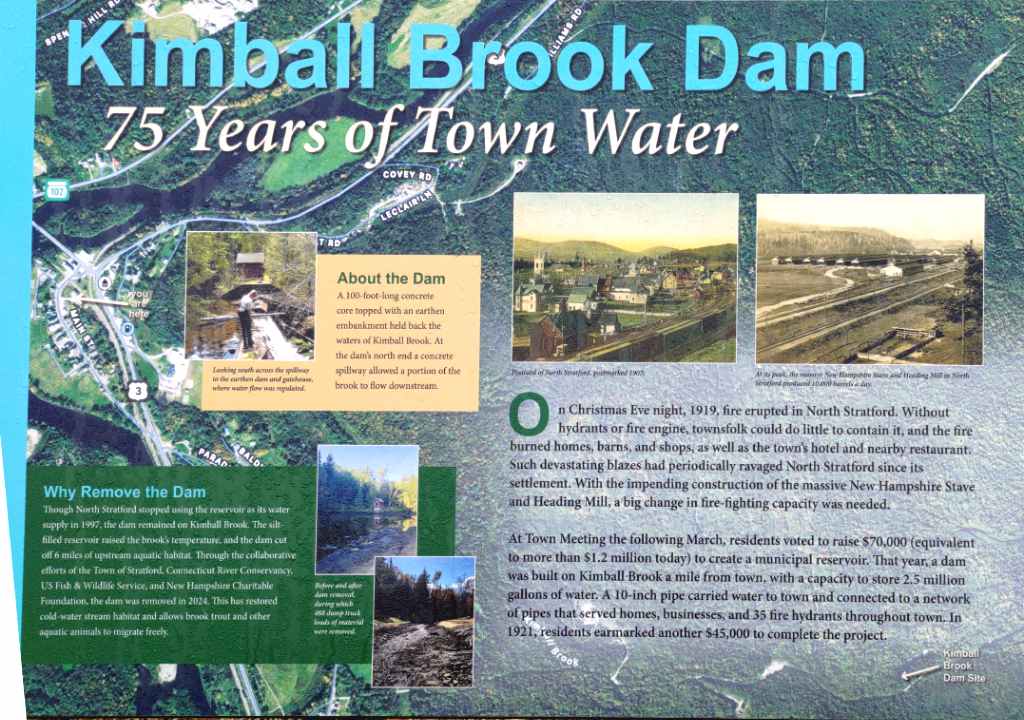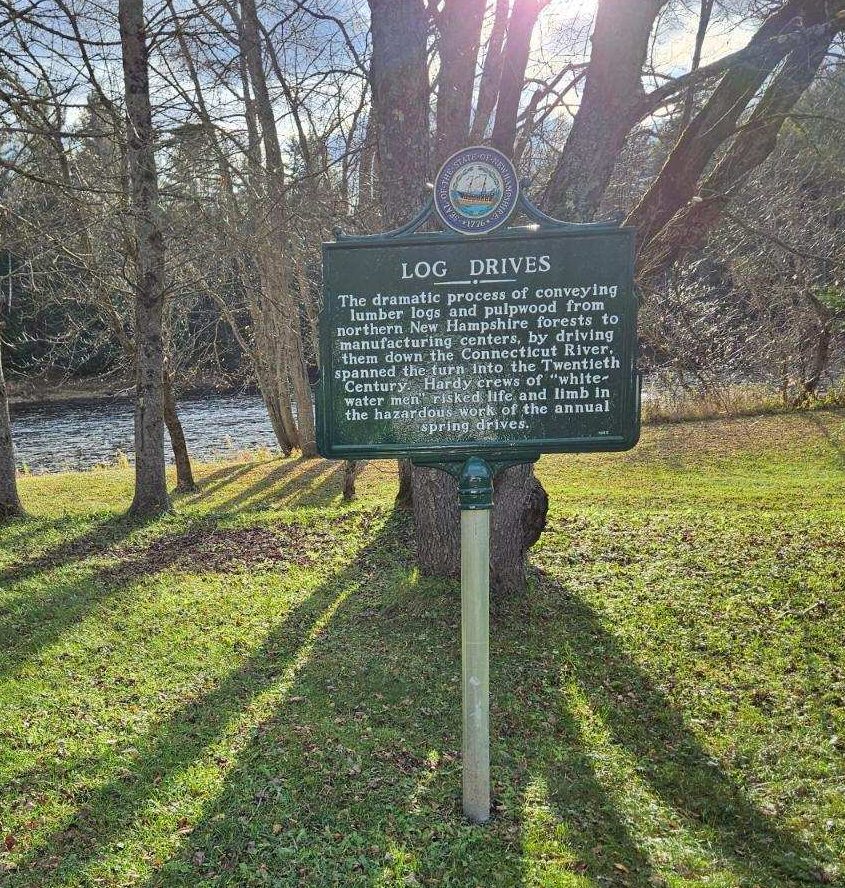About Stratford
- Brief History
- Sustainability & Resilience
- 250th Celebration
- Kimball Brook Dam Removal
- Historical Places & Markers
| Stratford, incorporated in 1773, was originally called Woodbury. The town has a long history of ingenuity and creativity – nature lovers, loggers, hunters, storytellers, artists, and teachers have proudly and devotedly called it home, even in hard times. Known for its natural beauty and wild backcountry – mountains rich in local lore, wildlife, wandering brooks, and wildflowers – the town has retained a sense of timelessness. Through the years, Stratford has quietly and stubbornly retained its scenic beauty, quaint charm, quiet pace, and dedication to individuality. | 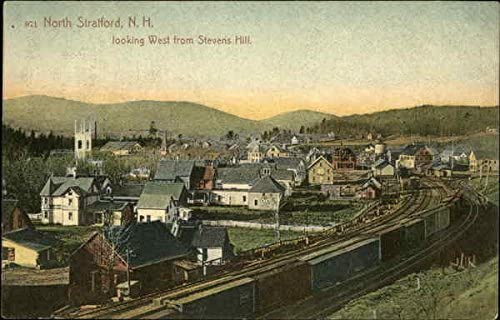 |
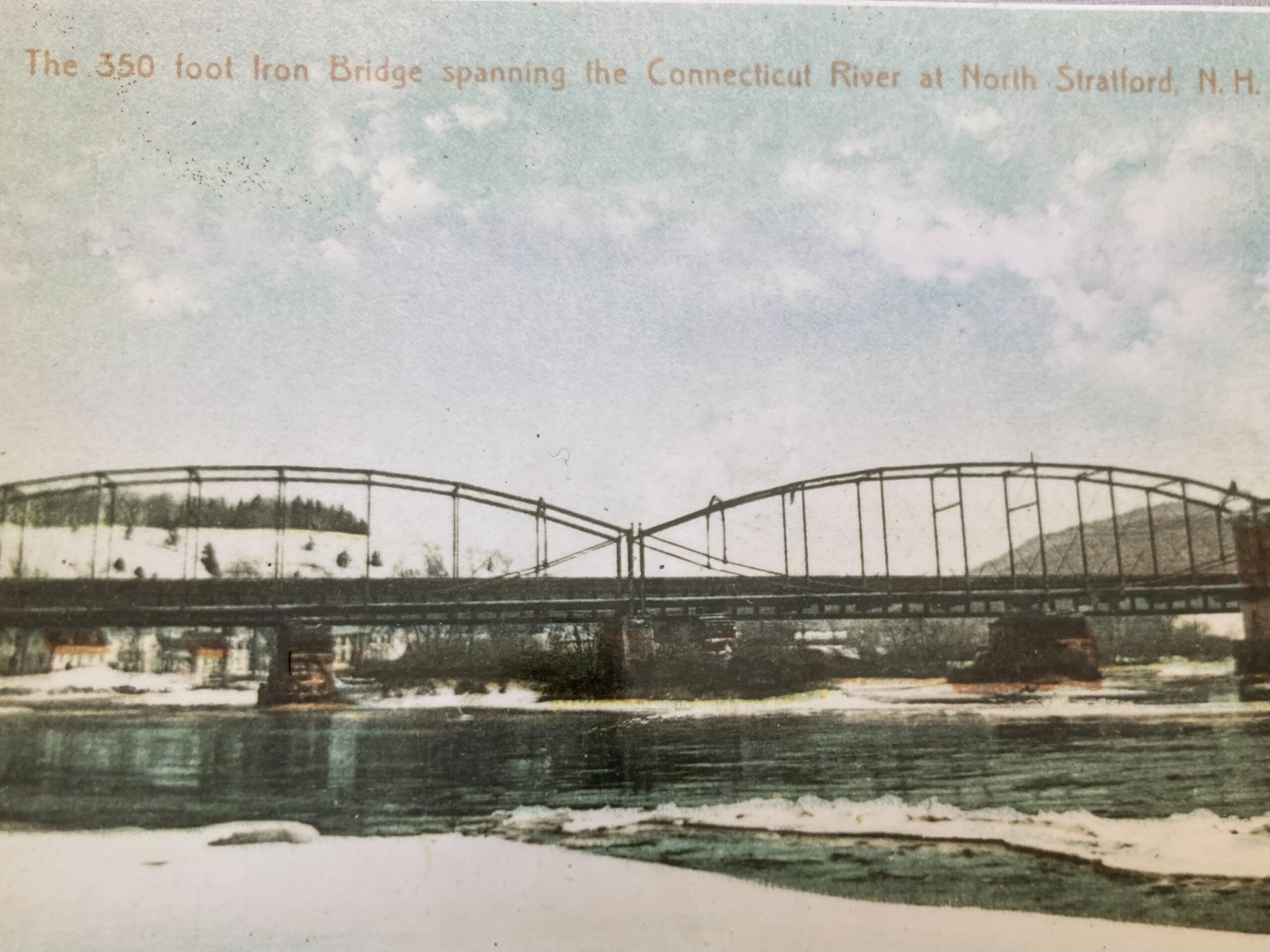 |
A farming and logging community until the late 1800s, small family farms dotted fields and hillsides, and farmers made their living from sheep, cows, goats, and other animals, as well as vegetables raised for market. Remnants of old farmhouses and barn cellar holes remain. Equally important were mills on small brooks, notorious for live bottoms and rolling rocks. Stave, shingle, saw, and grist mills employed residents then. Brooks and the Connecticut River served as a means to get products to market, as did the railroad. The railroad is also a key piece of the town’s heritage. Besides the Connecticut River, rail was a principal means of transporting wood, agricultural, and manufactured products. In addition to transporting goods, the railroad conveyed passengers to and from Stratford and served as a vital communications link as it transported mail and provided a telegraph station. |
| The influence of the town’s economic history can be seen in today’s landscape, land use, and land ownership patterns. Like much of the North Country, most of Stratford was at one time owned by paper companies. Today’s woodlands represent regeneration following years of logging. The many small ponds dotting the landscape were once used to hold surplus water, which when released, contributed to the great log drives where pulp logs were conveyed via the Connecticut River to mills in Groveton.Logging roads and camps on paper company land opened the door to four-season forest recreation. The sale of large tracts of paper company land enabled the public acquisition of lands for limited public recreation and conservation. Nash Stream Forest, the largest of these acquisitions, lies in Stratford, Odell, Stark, and Columbia. | 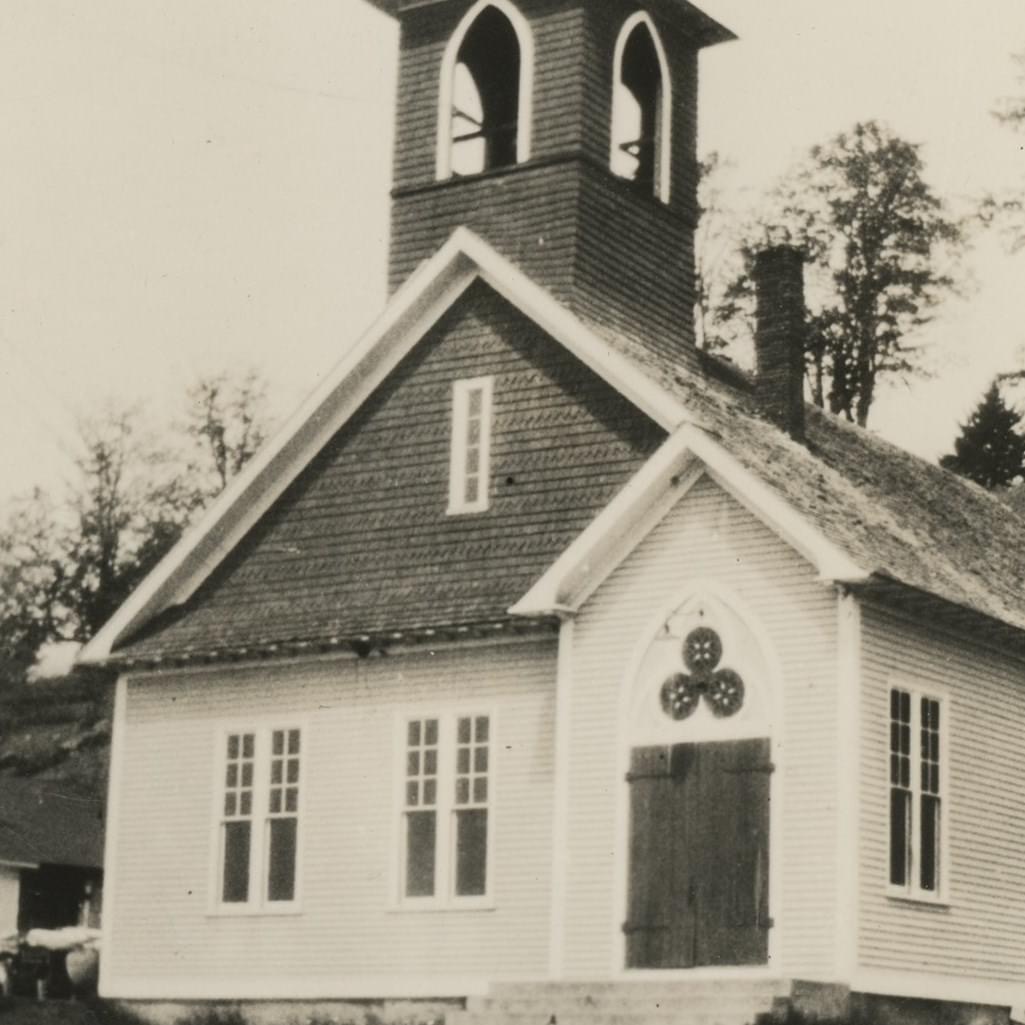 |
Over the past few years, the Town of Stratford has invested in energy efficiency upgrades and solar power projects. These investments help to reduce the cost of power, light, and heat for our municipal buildings and to reduce the town’s carbon footprint. The projects were funded in part through a range of grants as well as utility rebates, and were coordinated by Clean Energy NH.
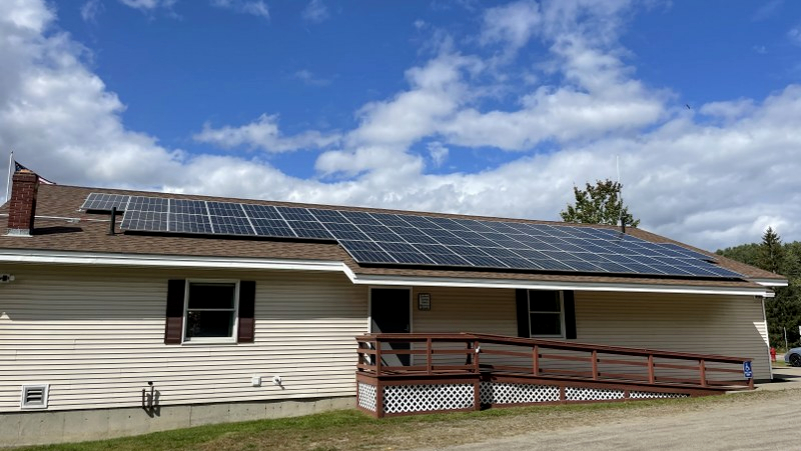
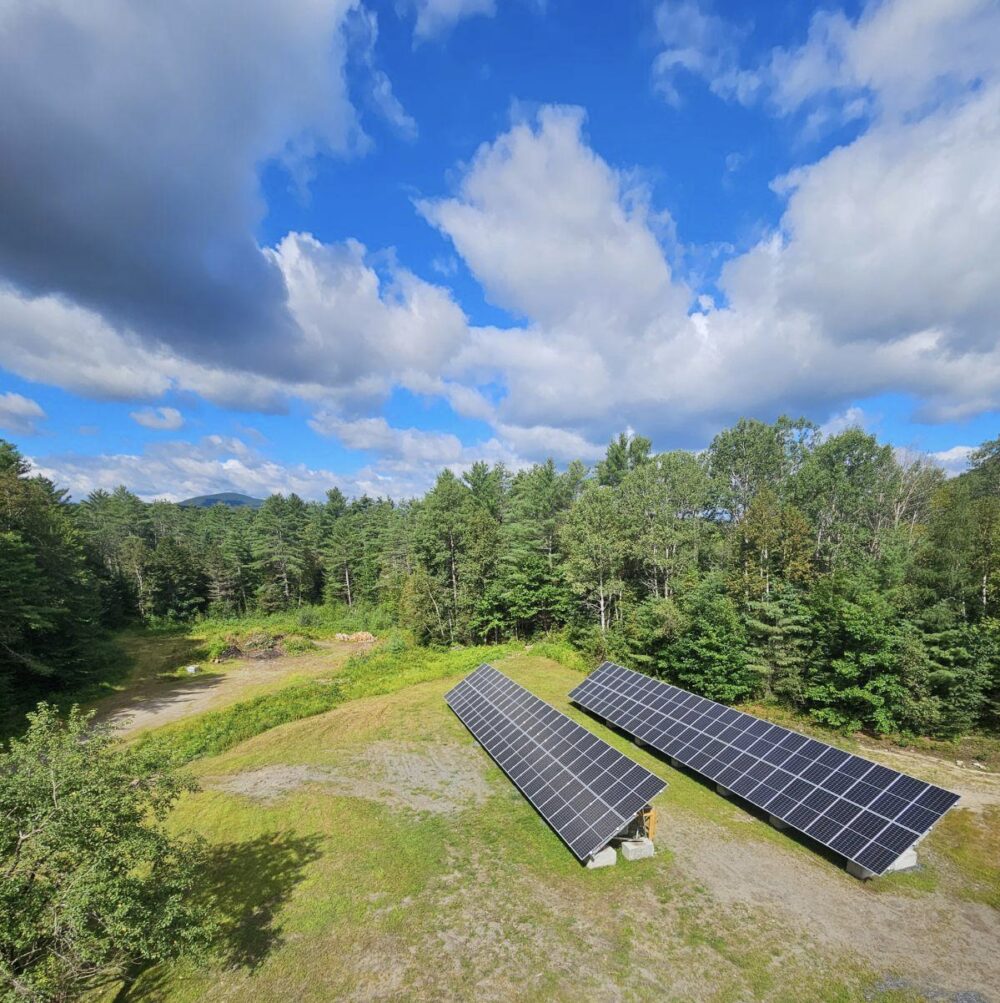
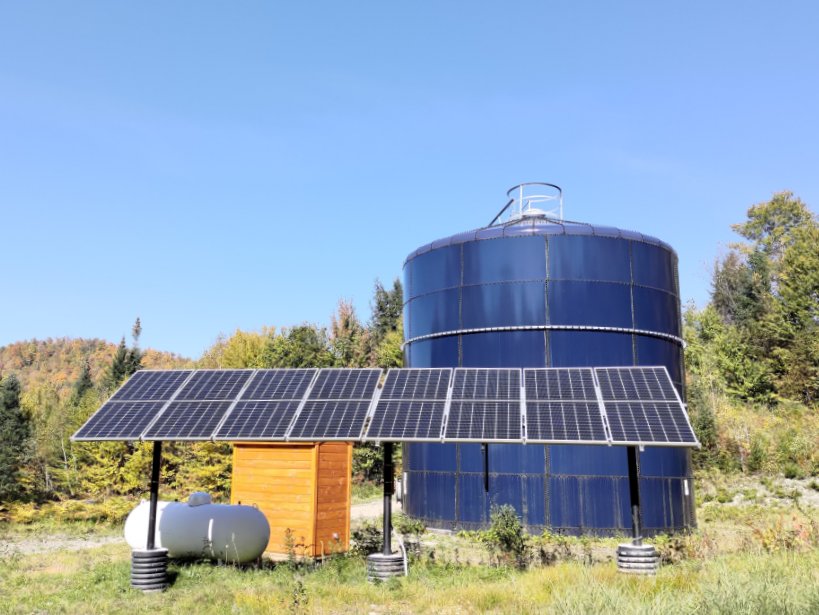
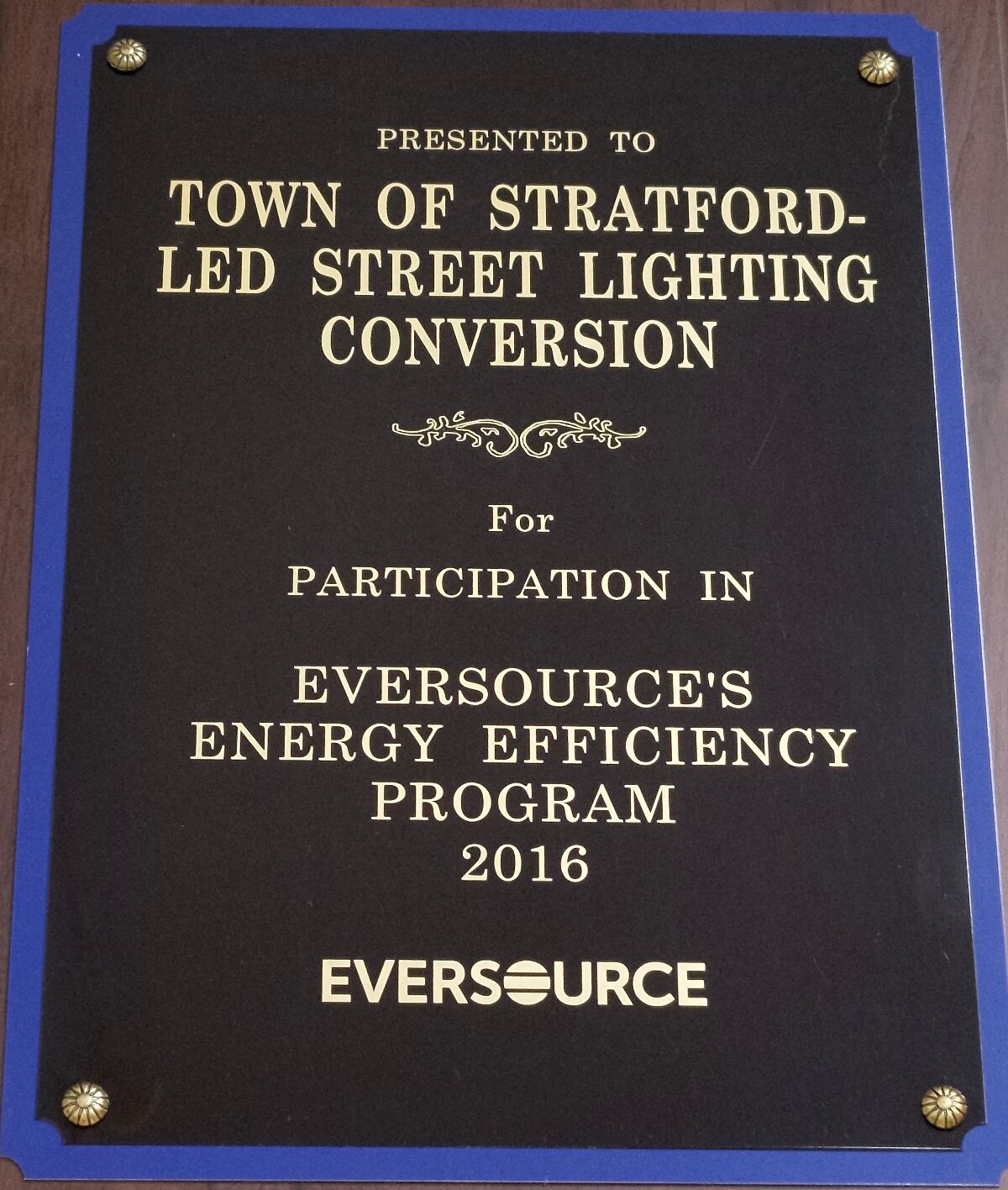
Solar Power
- 20 kw array on roof of the Town Hall (Oct 2021)
- small array to power water mixer at the town’s water tower (Dec 2022)
- 50 kw ground-mount array near the Salt Shed (completed in August 2023). This allows all municipality buildings to be entirely solar powered.
- 6 kw solar array on the pavilion in the North Village to power heat pumps for the Library and Town Hall as well as a free Level 2 EV-charging station (April 2024) located at the pavilion.
- see how much solar power our panels are producing!
- Stratford in the press:
- article from Clean Energy NH
- article from NH Business Review: How small Stratford went big on solar
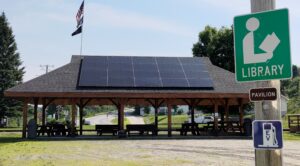
LED Lighting
- LED lighting upgrades throughout the Town Hall and Fire Station
- all streetlights in Stratford were converted to energy-efficient LED lights in 2016
Energy Efficiency & Weatherization
- After undergoing energy audits, the Town Hall, Town Garage, Fire Station, and Library were all upgraded with improved insulation to help reduce energy costs and environmental impact.
- New radiant tube heating was installed in the Town Garage in 2023
- In 2024, energy efficient heat pumps were installed to heat the Library building and upper level of the Town Hall. The existing furnaces in both buildings (gas and oil) were retained as back-up systems.
We’re Not Done Yet
Over the next few years, we hope to further improve the Town’s energy efficiency by replacing old, expensive heating systems with highly efficient heat pumps and by augmenting our solar energy systems with battery backups. The purpose of these measures is to reduce taxpayer burden and to ensure that the Town remains as strong as possible through the changes the future will bring.
Stratford’s 250th Weekend: Celebrating Community
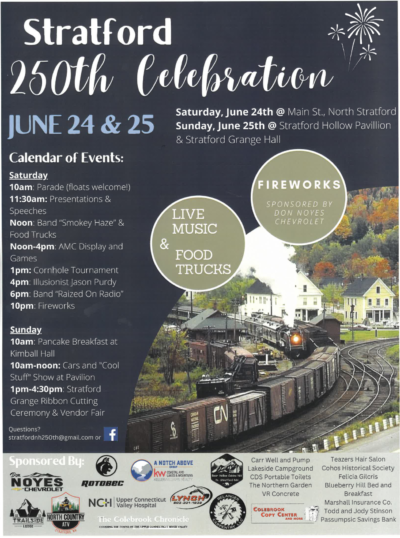 On the last weekend of June, 2023, the Town of Stratford came together to celebrate its 250th founding anniversary. Festivities took place despite this summer’s eternally cloudy and wet skies and the turnout was great! In fact, many attendees remarked they hadn’t seen this many people coming together in the Town of Stratford since the great train wreck. This was a much more joyous occasion, though! Below are some impressions from the festivities.
On the last weekend of June, 2023, the Town of Stratford came together to celebrate its 250th founding anniversary. Festivities took place despite this summer’s eternally cloudy and wet skies and the turnout was great! In fact, many attendees remarked they hadn’t seen this many people coming together in the Town of Stratford since the great train wreck. This was a much more joyous occasion, though! Below are some impressions from the festivities.
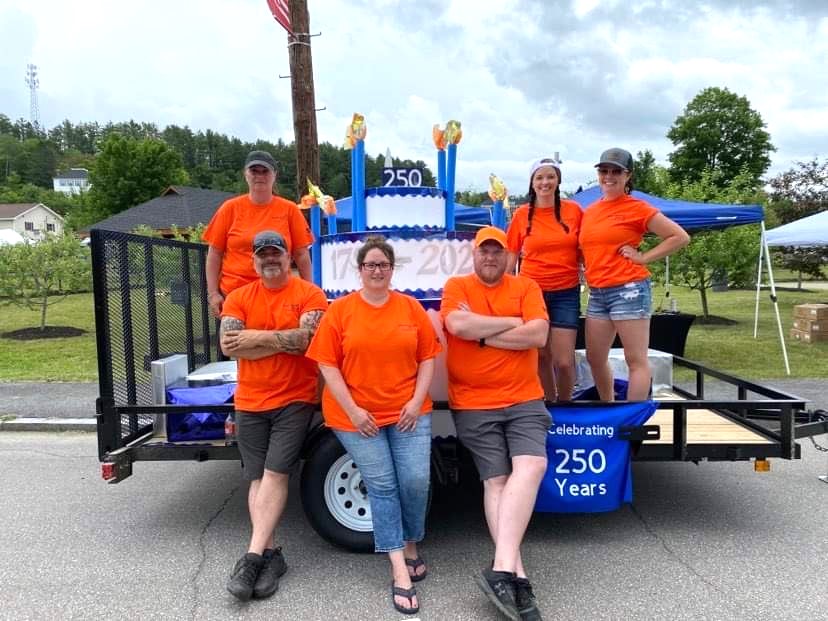 |
A big shout-out to the Stratford 250th Committee that made it all happen: (from left to right) Nicole King, Patrick Carr, Sarah Kennett, James Kennett, Renee Kennett, Molly Carr. They raised over $30,000 from local businesses, organizations, and individuals and donated countless hours in planning and organizing the event. |
| A nearly 1-mile-long parade kicked off the events on Saturday, including a variety of floats celebrating the town, from log drives and town history to local businesses and fire departments. The Groveton VFW provided the color guard and the Sheriff’s department was able to contain traffic on Route 3 without a hitch. | 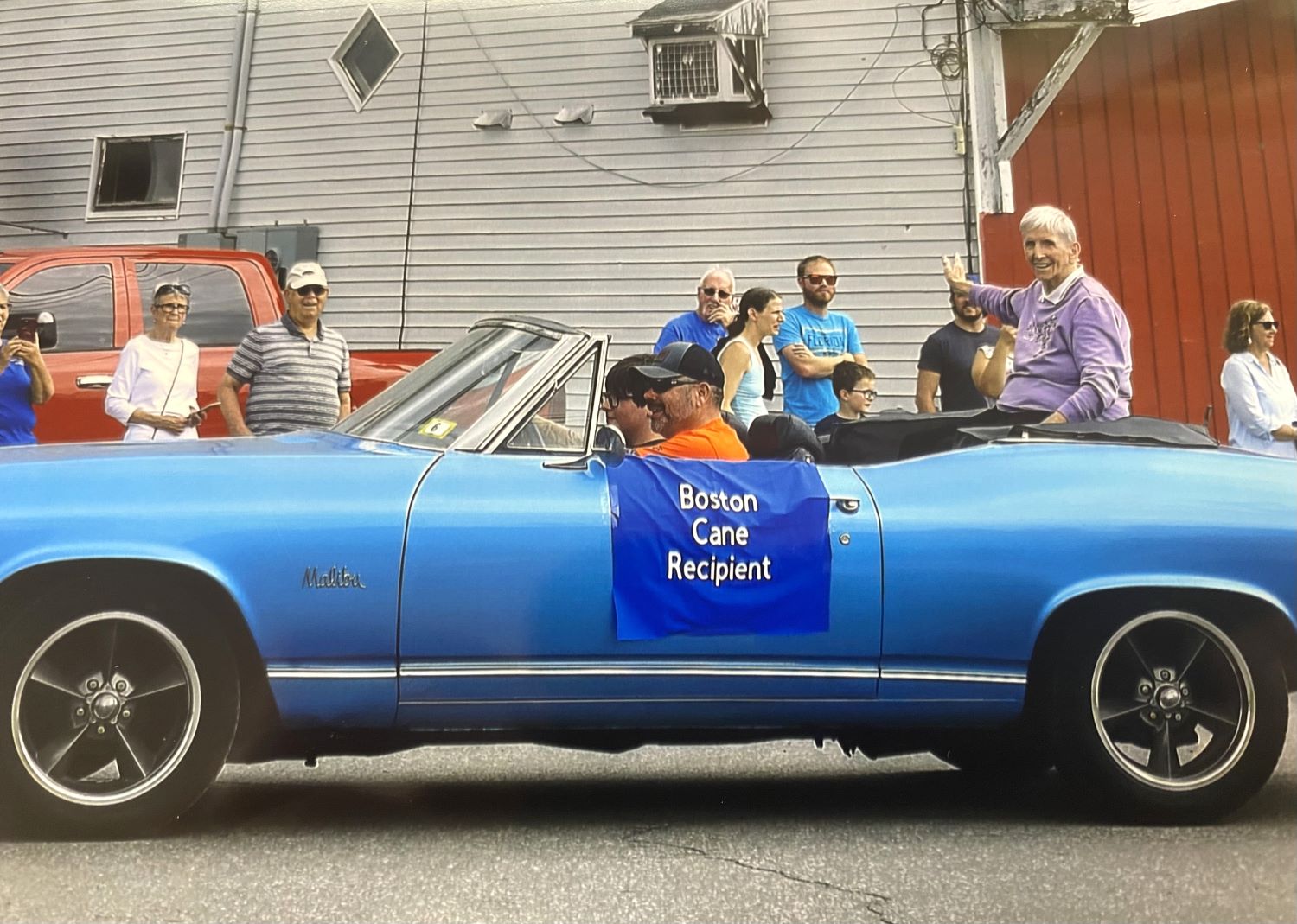 |
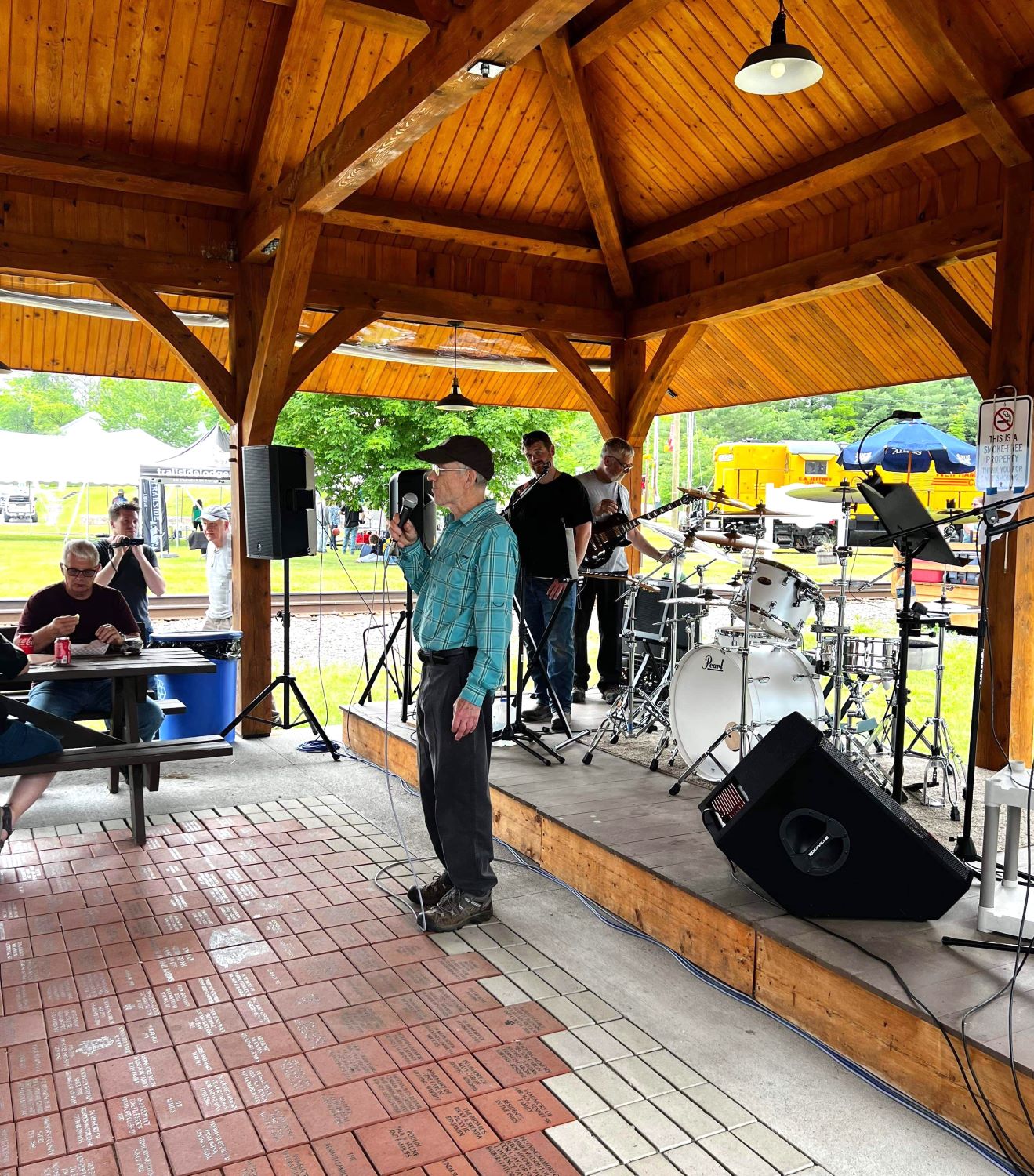 |
The Town Common and Pavilion were the site of entertainment with music, vendors, food trucks, and a kids area. A splendid display of fireworks by the school rounded off the eventful day. |
| On Sunday, festivities continued with a car show at the Stratford Hollow Pavilion, a pancake breakfast hosted by the Cohos Historical Society, and the ribbon cutting to officially re-open the recently renovated Stratford grange hall. | 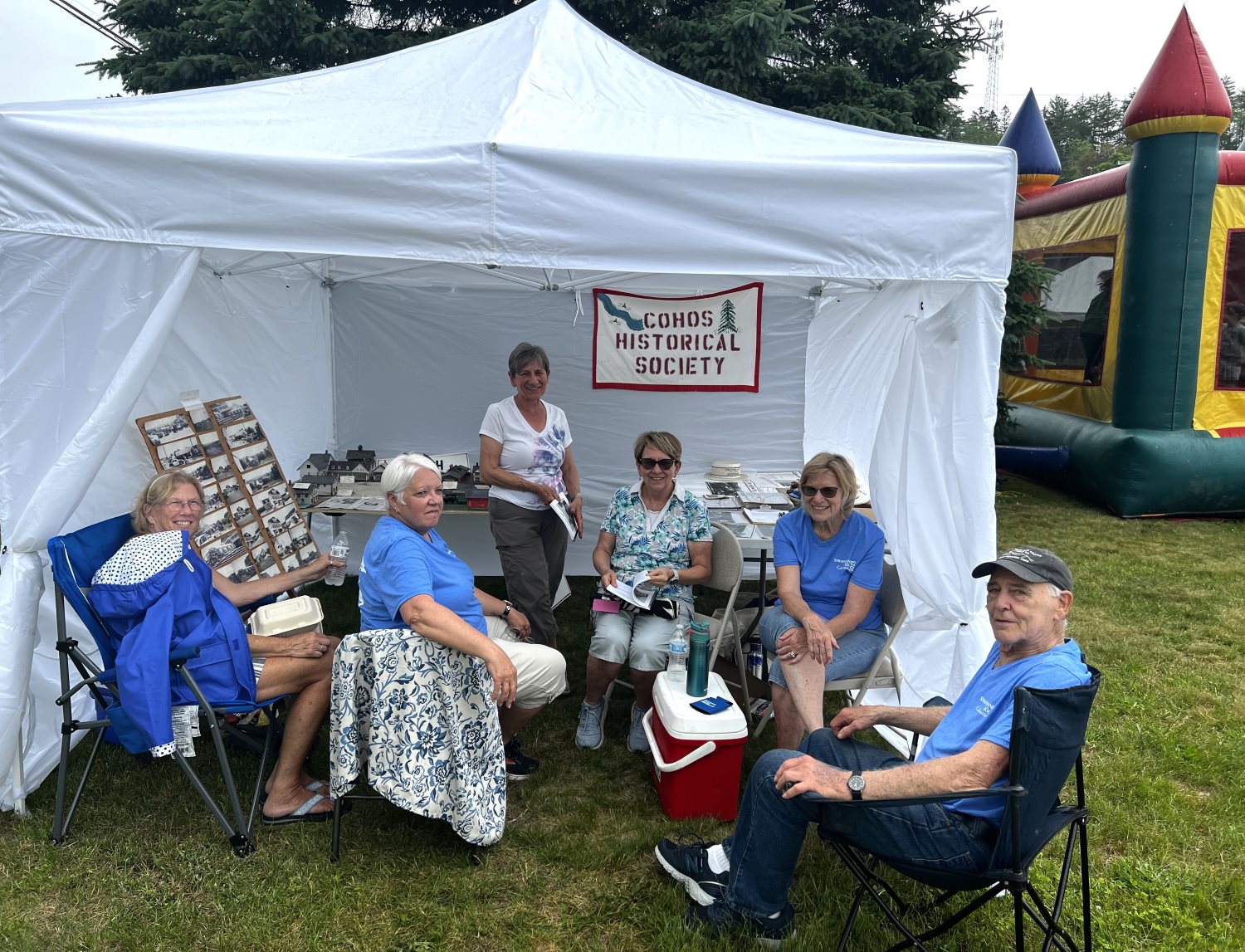 |
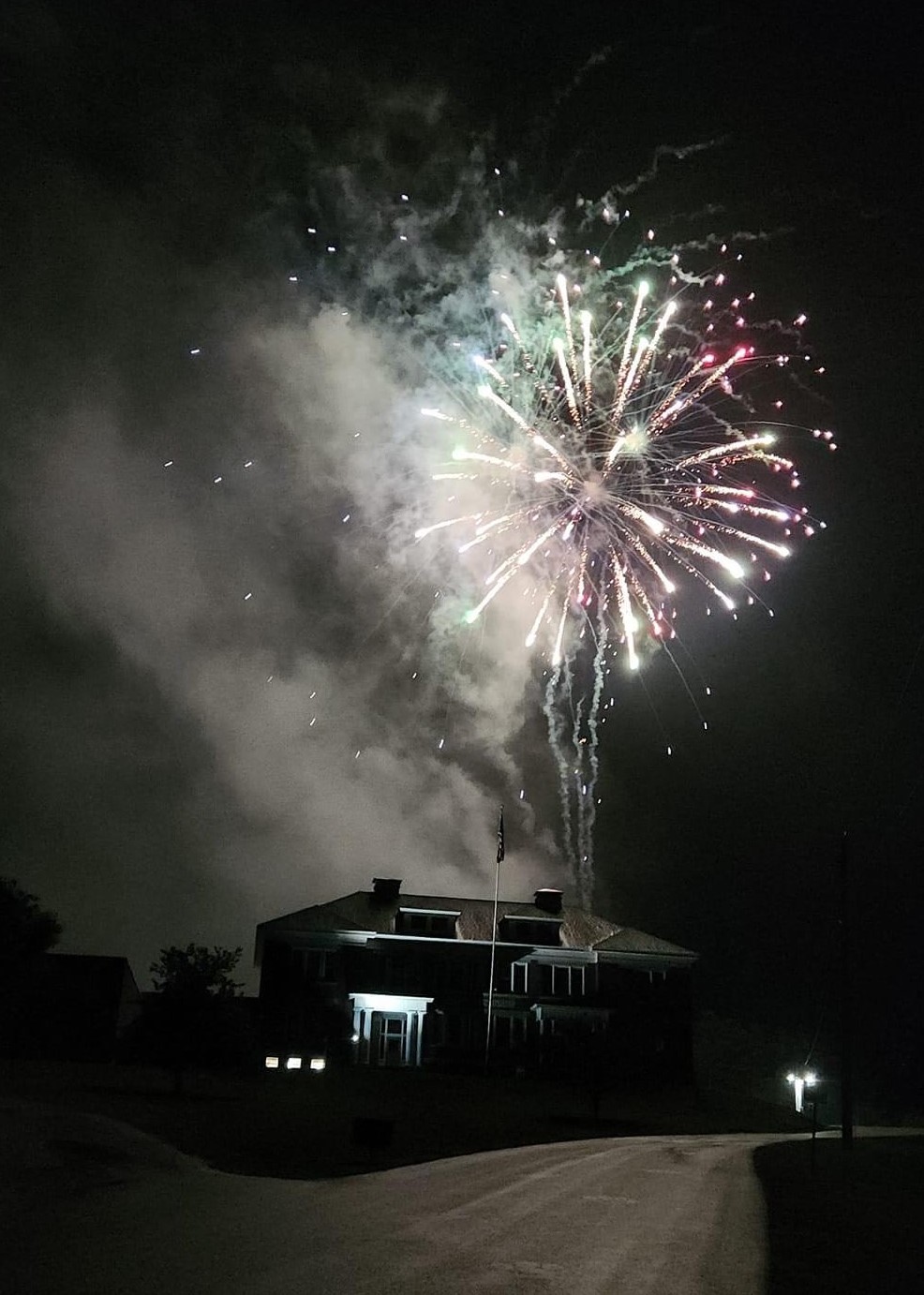 |
Read the article covering the 250th Celebrations in the Colebrook Chronicle. |
Kimball Brook Dam Removal and Restoration
The Kimball Brook Damn was completed in 1921, creating a reservoir with the capacity to hold 2.5 million gallons of water, which was the initial public water supply for the village of North Stratford. The reservoir was retired in 1997, when the Town developed their new water supply system, switching from an open-water source to groundwater wells.

The old reservoir and the dam remained in place for another 25 years until it was finally removed in 2024. Attempts to drain the reservoir in the 2023 season failed due to the excessive rains.
The project was funded and implemented by the NH Charitable Foundation, U.S. Fish and Wildlife Service, and Connecticut River Conservancy, without any cost to the Town. Local businesses were involved in the engineering and the actual dam removal and restoration of Kimball Brook.
“This long-abandoned dam has negatively impacted Kimball Brook, which supports native, wild cold-water fish species. Removal of this dam has opened 6 miles of river habitat, allowed for natural sediment transport and habitat creation, and will help decrease river temperature to better support cold water fish species.”
Connecticut River Conservancy
Find more info at
Connecticut River Conservancy – Dam Removal
NH DES Dam Removal and River Restoration
|
Reservoir looking towards intact dam with
|
Digging out the silt after draining the reservoir |
Dig-out continues |
|
Outflow of drainage water over the old dam
|
488 dump truck loads
|
Knocking down the old dam |
|
Looking upstream, the new streambed takes shape |
Looking downstream, shaping the new
|
Finished streambed, looking downstream Erosion control mats are laid down,
|
|
Before and after view
|
Restored Kimball Brook in full flow after the December rains, upstream view |
Winter in the former reservoir
|
Credits: Photos by Connecticut River Conservancy, NHDES Dam Removal and River Restoration Program, Lynch LLC, Kitty Kerner
Stratford has a few remarkable buildings that are listed on the New Hampshire Register of Historic Places, as well as one on the National Register.
Stratford Grange No. 238
located on 845 US Route 3
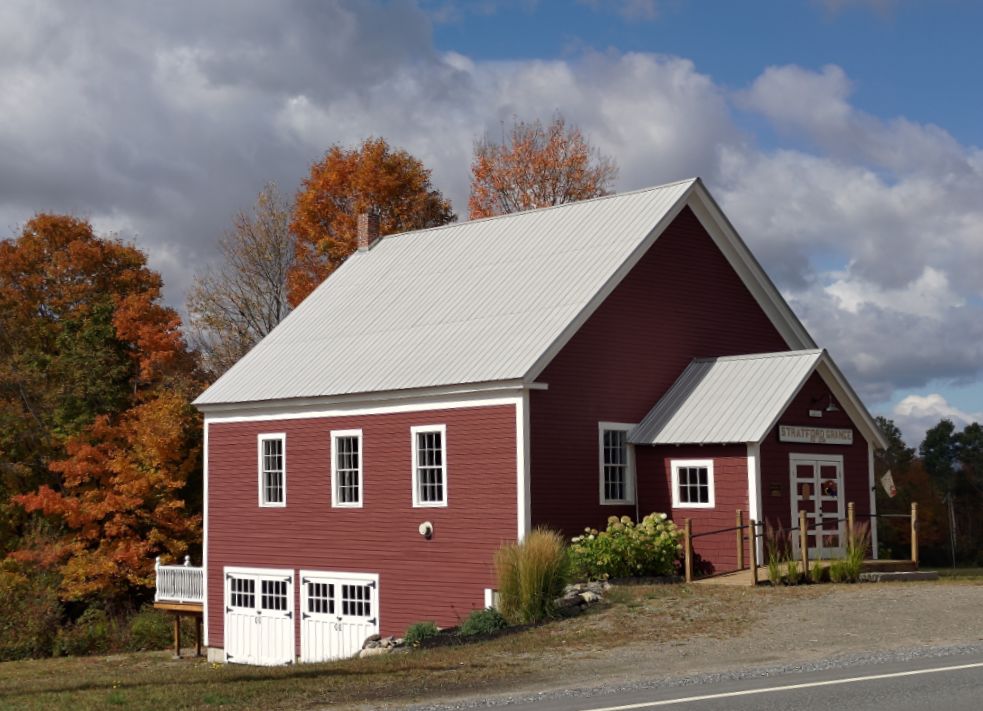

Constructed as the town’s meetinghouse around 1820, the building was moved across the road in the 1890s and became the headquarters of the local Grange. Eventually, the road developed into busy Route 3. Salt, snow, and vibration from passing trucks buffeted the building, while run-off from the road washed through the building’s fieldstone foundation and rot damaged much of its clapboard siding.
Over the last few years, the Town took several steps towards rehabilitating this landmark building. It started with a nomination of the building to the NH State Register of Historic Places, followed by a building assessment to prioritize needs, and, finally, securing a grant from the Land and Community Heritage Investment Program to fund the much-needed repairs.
The building was lifted and moved twenty feet back from Route 3 to provide a buffer with the ever-increasing traffic and the winter snowbanks, and placed on a new solid foundation. New drainage and retaining walls were also installed. Exterior repairs included new radially sawn clapboards, repairing the 6/6 windows, and painting.
An informational kiosk was added in the Grange’s vestibule, highlighting the building’s history. It is accessible to the public at selected times, watch for the ‘open’ flag.
Marion Blodgett Museum
located on 38 Hollow Road
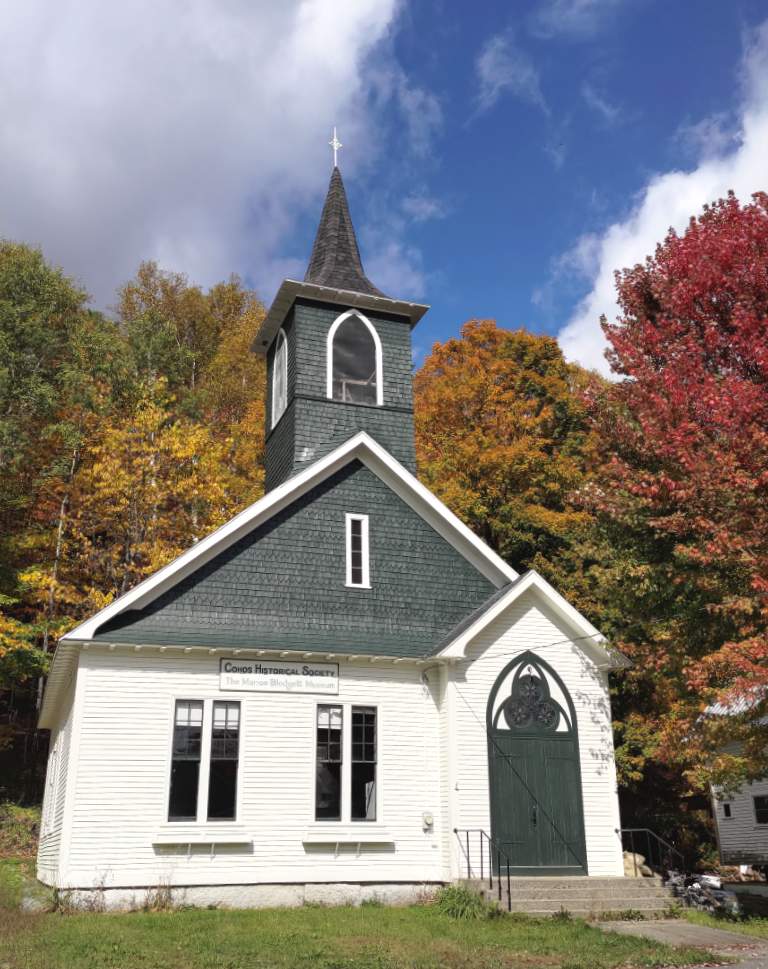

Listed on the New Hampshire State Register of Historic Places in 2010, the Stratford Hollow Methodist-Episcopal Church building overlooks the Village of Stratford Hollow in Stratford. The former church building was donated to the Cohos Historical Society in 2002. The Society is working on a long-term plan to create the Marion Blodgett Museum, which will serve the community as a regional historical society museum, cultural center and gathering space.
The Greek Revival-style building was completed in 1854. With a seating capacity of 200, it was the third church built in Stratford. Throughout the years several changes were made to the original building. 1896 brought the most drastic changes to date: The building was gutted to the framing then rebuilt in the shingle-style. The renovation included construction of a nine-foot addition—housing a new alter and vestry—to the rear of the building, and an entry vestibule to the front. The bell tower was renovated at this time. In 1896-97 three paired memorial stained glass windows were added to the nave. On May 22, 1897, the newly renovated building was re-dedicated.
Heat from a fire in 1922 at the general store to the west of the church caused significant damage to the stained glass windows on the church’s west side. About 1985, the historic double doors in the front of the building were removed and replaced by a pair of modern doors.
Cohos Historical Society Renovations
Upgrades and improvements to the former church building began after the building was transferred to the Cohos Historical Society in 2002, with the goal of transforming the space into a museum. Upgrades to the electrical wiring began in 2003 and funding from a 2010 grant from the Neil and Louise Tillotson Fund of the New Hampshire Charitable Foundation enabled the Society to make repairs to the steeple, sills and foundation and to install a drainage culvert. In 2018, the historic exterior double doors were reinstalled. The museum is now known as the Marion Blodgett Museum of the Cohos Historical Society, after Marion Blodgett, a long-time resident of Stratford.
Please note: The Museum is currently closed for renovations.
Stratford Public Library
located on 74 Main Street

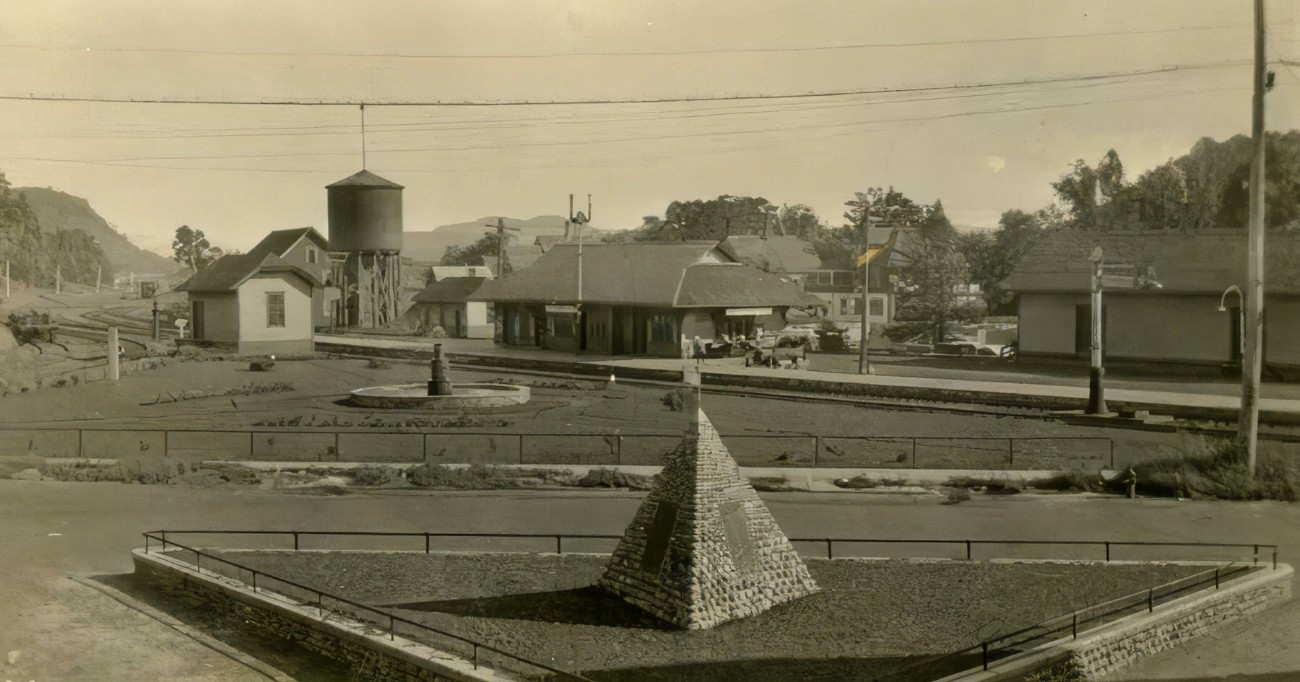
The Stratford Public Library is housed in the town’s former train depot, preserving the town’s history as an important railroad hub. The St. Lawrence & Atlantic Railroad was the first international railway in the United States. It came through Stratford in 1853 and connected Montreal, Quebec with Portland, Maine – an ice free port used to ship Canadian wheat to Europe.
The first depot was actually located across the river in Bloomfield, Vermont and was just a workman’s shanty. The first depot in Stratford was built in 1854, a very small affair. As passenger traffic increased and Brunswick Springs with its fine hotels became more popular, a larger depot was built in 1889 on the north side of the tracks. In 1920, the depot was moved to its current location across the tracks and was enlarged. The railroad gave the town of Stratford the vacated property to develop a small park with a water fountain. As rail traffic decreased after WWII, the station became a work shed and finally fell into disrepair.
In 1999, residents of Stratford wanted to save the depot and with the town purchase of the building they went about getting grants to restore the depot to its former glory. It opened as the Stratford Public Library in 2008. In 2025 the building was listed on the New Hampshire State Register of Historic Places. The Library has a “Railroad Room” with a small railroad museum and an operating O-Scale model railroad, which is open to the public during regular library hours as well as on special occasions.
Martin Homestead
located on 2369 US Route 3
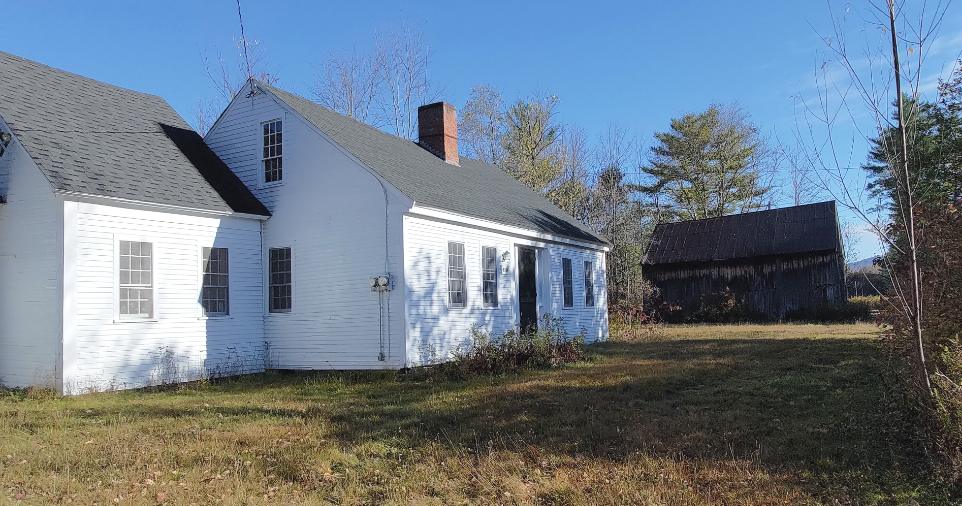
The Martin Homestead is a historic farm property on U.S. Route 3 in Stratford, New Hampshire. Established in 1830, it retains both the original house and English barn, with 112.5 acres of field and woodland that run along the Connecticut River for nearly 3/4 mile just south of the Columbia town line. The property was listed on the National Register of Historic Places in 1998, the only one in town.
The Martin Homestead is a relatively intact example of an early riverside farm in Stratford; most similar farms have either disappeared or suffered severe compromise. The main house is a well-preserved 1.5-story plank-framed Cape, built around 1830. It is the best-preserved period Cape in Stratford and considered the town’s oldest house still standing. The free-standing “English” barn appears to be contemporary to the house. This arrangement of detached buildings was common in early 19th-century New England, giving way later in the century to connected farmsteads. The surviving arrangement seen here is particularly rare in the area.
Historical Markers around Town
Click on the pictures to open a full sized version
